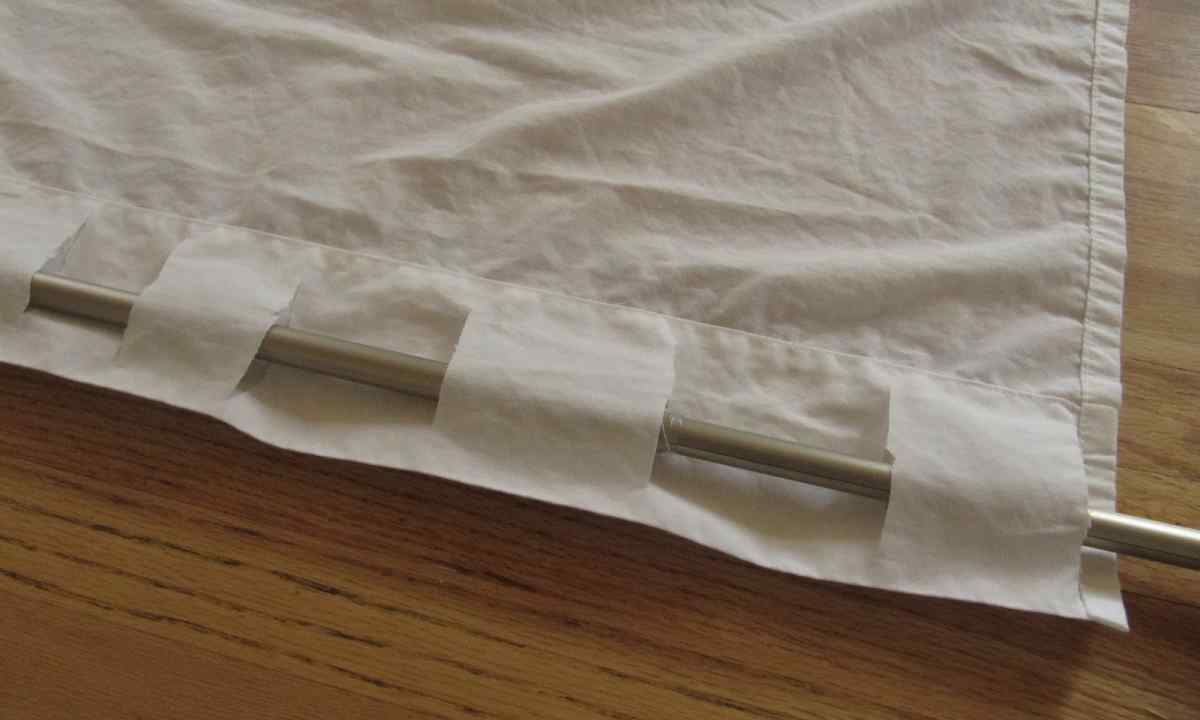To calculate necessary amount of fabric on curtains, first of all it is necessary to decide on their design. And then at measurements to consider several important parts.
Length of curtain can be three types. The first option: the bottom edge of curtain is 1-2 cm higher than windowsill (as a rule, it is kitchen option of curtains). In this case they will freely move, from windowsill will conveniently take necessary things and to open and close window. Also the curtain can be 10-15 cm lower than edge of windowsill: such option looks more accurately. The third option, for bedrooms and living rooms: the portiere is 1 cm higher than floor (so fabric will not wear out) or level with floor (if you are sure that you will often not move curtain).
For determination of length of fabric measure distance from top of the fixed rail or from the basis of rings on bar to the expected provision of curtain below. It is for this purpose better to use not centimeter, but steel tape measure — it longer, more convenient and will allow to make the most exact measurements.
Consider several parts and add to the received length: 15 cm on podgib top and 10 cm on podgib bottom.
In shop of curtains do not forget to specify that these sizes include podgiba, otherwise selling assistants will add them to your measurements once again.
Width depends on the eaves length (measure it) and assembly coefficient (by how frequent folds you will collect your curtain) — as a rule, it makes 2-3 cm. Also add to width of 20 cm (on 10 cm for each curtain) on podgib sides. Thus, the formula for calculation of width will look as follows: increase length of eaves by coefficient of assembly and add podgib sides. It will be fabric width for two curtains. If to assume that the standard length of eaves of 2 m, the formula looks so: (2 m x 2) + 0.2 m. If you are not going to draw curtains, closing them window completely, fabric on width can be taken less. In this case measure width from edge of eaves to that point to which you will straighten curtain. Increase the received width by coefficient of assembly and add 10 cm on podgib. Width of one cloth of curtain will turn out. Having increased it twice, you receive width of necessary piece of fabric. The same council is relevant also for that case if you are going to do double portieres. At the edges of eaves, fabric of one texture (as a rule, with the difficult drawing), then fabric, contrast with it on color is hung up (usually monophonic). For calculation it is possible to take width of full curtain which has turned out at you and it "to give" two thirds to portiere with the drawing, and third — monophonic. In the same way the fabric consumption on tulle pays off. With only that accounting that the assembly coefficient (that is accounting of depth and frequency of folds) can be less. Well and, certainly, tulle will not need to be cut in half so on podgib on width we leave only 10 cm. It turns out, (2 m x 2) + 0.1 m. Some prefer to cut tulle where there is balcony door to facilitate access to it. If folds rather dense, this section is usually imperceptible, for it it is not necessary to count side bends.
Length of tulle has to coincide with curtain length completely.
Lambrequins — another story. Experts in shop will help to calculate amount of matter for them to you. The only thing that you can independently make for this calculation — to think over their design and to estimate length (as low they will hang down).

